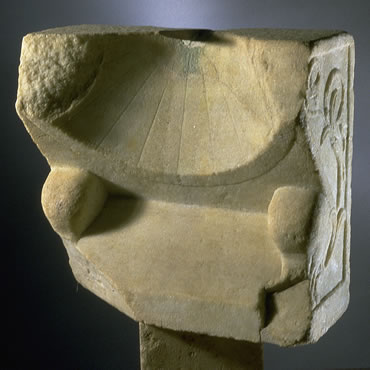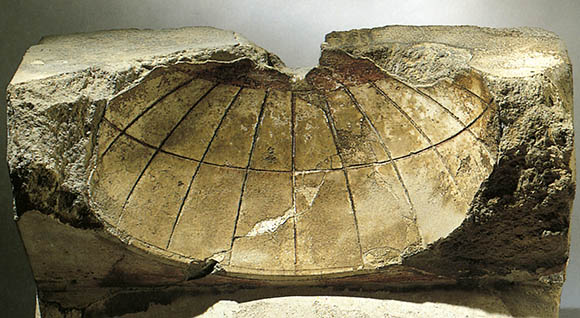1. Astronomy and measurement of time

The ancients assiduously observed and studied the heavens, both during daylight hours and at night. The sundials found in Pompeii prove that inhabitants knew about the cycle of seasons, and were able to recognize the hour of the day. Careful astronomical observations regulated the agricultural calendar. Knowledge of astronomy was also the subject of artistic depictions: this is the case of the Farnese Globe, an extraordinary example of the integration of art and science.
Roman astronomical knowledge originated from Greek and Hellenistic astronomy. In Pompeii time was established by observing the apparent motions of the Sun and the main stars. Ancient agricultural writers describe farmers using astronomical observations to predict the weather and decide on the sowing-season.
Astronomical observations were also used in the formulation of astrological predictions. Some emperors, including Augustus, sought auspicious moments for important decisions.
The sphere of the Atlante Farnese is the earliest Roman representation of the celestial globe to survive.
It would appear that the year, called romùleus from Romulus, of the first Roman calendar consisted of 304 days, divided into ten months, from March to December.
Under Numa Pompilius a calendar with 355 days and twelve months, was adopted; it allowed for the intercalation of a month, the so-called mercedònius, on alternate years. This calendar was divided into periods of eight days, called nùndinae. Propitious days, when justice was administered and rites performed, were distinguished from unfavourable days. April was considered to be the date of the foundation of Rome.
In 46 BC Julius Caesar instituted the year of 365 ¼ days, intercalating one day every 4 years, during the month of February.
The Julian calendar, in effect until 1582, was gradually substituted by the Gregorian calendar, in which the duration of the civil year corresponds more precisely to that of the solar year.
The sundial was the most common instrument used to tell time. It functioned on the basis of the solar shadow cast on appropriately drawn lines.
Hundreds of Roman sundials survive, of which more than two dozen have been found in Pompeii. The functioning and method of construction of sundials was discussed at great length by Vitruvius; he also mentioned water-clocks, which could be used at night and when it was cloudy.
Precise determination of the time of birth assumed great importance as from the first century BC, due to a growing popular interest in astrology.


